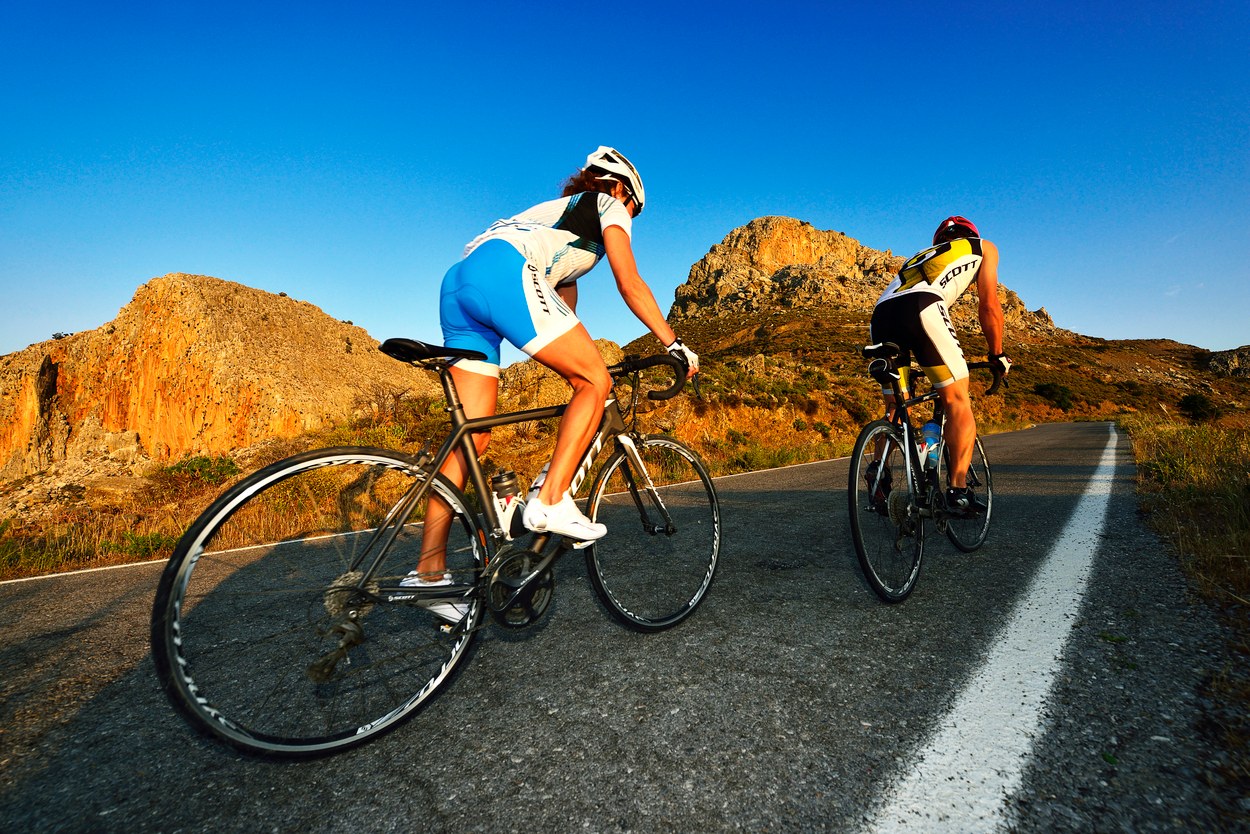Looking behind you
Every cyclist learns how to safely look behind relatively early. It’s something that experienced cyclists do almost automatically. The problem is that inside of a group, you have to use a bit of a different technique to avoid crashing into riders next to you. This is because when you turn your head to look, your front wheel usually swerves to the same side as your head. In a group, focus on keeping forward pressure on the bars and pushing the bars very slightly to the opposite direction your head is turning. Start by practising this on your own in a safe environment. Experienced cyclists in the peloton often place their hand on the shoulder of the rider next to them to make sure the distance between them stays the same when their head turns.
Riding in a pace line
A pace line is a big part of cycling in a group. It is a formation where riders are in a single line and they share the work at the front of the group, while also sharing the rest in the draft. Pace lines are the reason why you can ride so much faster in a group than alone. It is used a lot in track cycling as well as road races such as the Tour de France to improve the chances of breakaways to succeed. There are several key things to keep in mind if you want to be a valuable member of a pace line.
- When it’s your time to be in the front, focus on keeping the same pace as did the rider before you.
- It’s better to pull for longer rather than faster. Don’t speed up even if you think you can handle it, you would cause issues for the riders in the back.
- It’s better to pull for a shorter time rather than slower. If you think you can’t pull the group for the same amount of time as the rider before you did, it’s OK to cut your time in the front short. That way your group will avoid losing precious momentum.
- Don’t go all out when pulling the group. Save something in the tank to be able to accelerate back to the pulling line after resting.

Forming an echelon
If you encounter crosswinds in a pace line, you will quickly have to adapt to form an echelon. This means each rider changes position slightly to line up diagonally across the road to ensure they get the best protection from the crosswind. The width of the road then limits the number of riders who can fit in the echelon and sometimes two or more echelons have to be formed. If you’re at the front when crosswinds hit, ride on the side of the road the wind is coming from. When ending your turn at the front, pull off into the wind and then drop back quickly across the back of the group.
Moving inside of a large group
When riding in a larger group or a peloton, it’s not easy to move up in the front. You simply can’t fit between two riders in front of you if they are shoulder to shoulder. You can go all the way to the side and try to go around the group to the front but you would be wasting precious energy fighting the wind alone. The best strategy is to move diagonally. To initiate your move, get your handlebars in front of those of the rider next to you. That will allow you to dictate where the two of you go. If the group is very tight, you can protect your handlebars by extending your elbows outwards slightly. Be very careful when doing this, you don’t want to suddenly throw your elbows and hit an unsuspecting rider next to you, causing a crash.
Dealing with close contact
Riding in groups means you will come in physical contact with other riders. There can be a lot of bumping of shoulders in races but it sometimes happens in training too. If you’re ready and know how to react, you will be much more comfortable with it. The first thing to keep in mind is to relax and keep your elbows and shoulders loose with a controlled firm grip on the handlebars. A loose upper body can absorb bumps much easier than a tense one. If you feel a heavier bump, like a rider is leaning on you, you have to match the force and slightly lean in the direction of the rider too. The two opposing forces will cancel each other out and you will be able to stay balanced.
Start by practising some of these skills in a safe environment to gain confidence. But nothing replaces real experience. So, go out and join a group ride!




